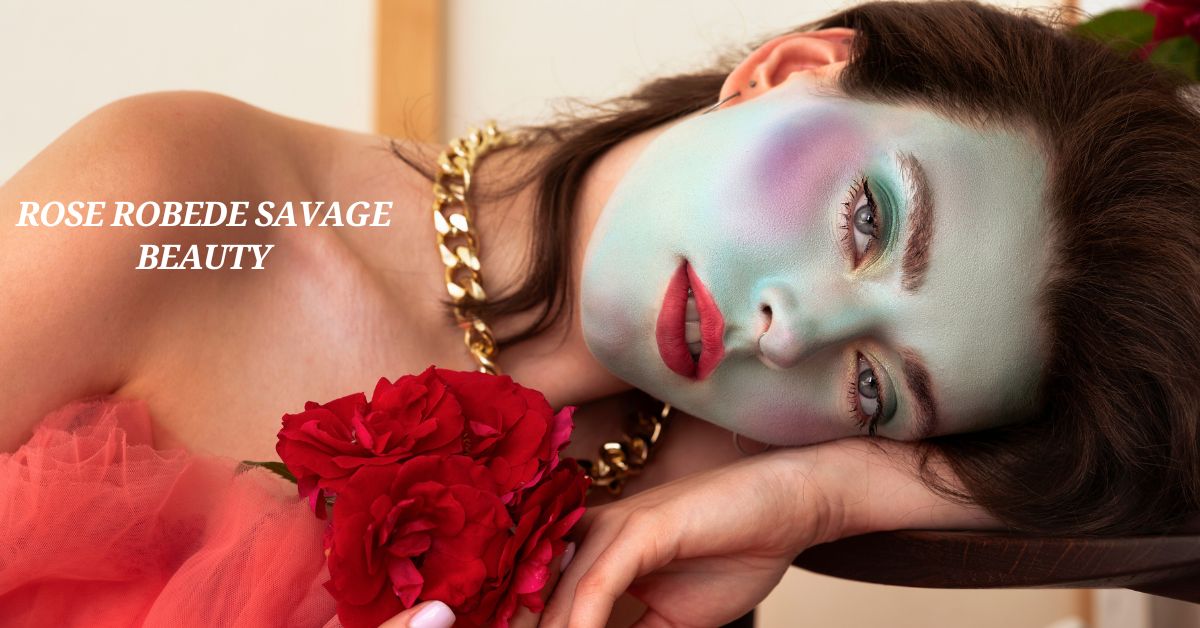Roses have long captivated the human imagination, symbolizing love, ardour, and beauty. Yet, among the myriad of rose types, none evoke intrigue pretty, just like “rose robede savage beauty.” This specific flower embodies an enchanting allure, combining beauty with a wild, untamed spirit. In this text, we’ll delve into the importance, cultivation, and inventive representation of the Savage Beauty Rose, exploring why it keeps to inspire poets, gardeners, and artists alike.
The Historical Context of Roses
A Brief History of Roses
Roses “rose robede savage beauty” have been cherished considering historical instances, dating back lower back over 5,000 years. Originating within the Far East, particularly in areas like China, they unfold to Europe and the Americas, becoming synonymous with love and beauty in various cultures. Each generation introduced unique meanings and makes use of for roses, from medicinal applications in historical Egypt to romantic gestures within the Victorian era.
The Symbolism of the Rose
In literature and art, roses had been used as symbols of love, splendor, and transience. The coloration of the rose carries its very own significance, rose robede savage beauty with purple symbolizing passionate love, yellow representing friendship, and white embodying purity. The Savage Beauty rose, with its complex shades and fascinating presence, gives a rich tapestry of symbolism to discover.
You May Also Like: Elderly Fleur de Lys Motif Fashion: A Guide to Classic Elegance
The Birth of the Savage Beauty Rose
Hybridization and Breeding
The Savage Beauty Rose is manufactured from meticulous hybridization. Cultivators sought to combine hardiness with beautiful visual attraction. The end result is a rose that not only thrives in numerous climates but also showcases a high-quality array of colors and paperwork.
Unique Characteristics
What sets the Savage Beauty rose apart “rose robede savage beauty” ? Its petals boast wealthy, saturated colours regularly combined in sudden methods. The blooms are big, often fragrant, and can range from deep red to tender blush. This rose is likewise incredible for its potential to thrive in difficult conditions, making it a fave among gardeners in search of both splendor and resilience.
Cultivation Tips for the Savage Beauty Rose
Choosing the Right Location
Rose robede savage beauty, especially the Savage Beauty variety, flourish in places that receive full sun for as a minimum six hours an afternoon. Well-drained soil is crucial; heavy clay can lead to root rot. Consider raised beds or planting on slopes for most effective drainage.
Soil and Fertilization
To make sure healthy growth, it is crucial to complement the soil with natural dependencies. A mixture of compost and properly rotted manure can offer the nutrients needed for strong blooms. Regular fertilization throughout the growing season allows for maintaining vibrancy.
Watering Practices
While roses enjoy moisture, overwatering may be unfavourable. It’s high-quality to water deeply but infrequently, permitting the topsoil to dry out among watering periods. This encourages deep root boom, contributing to the plant’s ordinary strength.
Pruning and Maintenance
Pruning is vital to maintain the health and aesthetics of Savage Beauty roses. Regularly get rid of dead or diseased timber and spent blooms to inspire new boom. Proper pruning promotes air flow and sunlight penetration, minimizing the danger of disease.
The Artistic Representation of Savage Beauty
In Literature
Roses have frequently appeared in poetry and prose, symbolizing numerous issues. The rose robede savage beauty, with its elaborate beauty and wild spirit, has stimulated countless writers to discover themes of affection, loss, and the complexity of human feelings. Works by means of poets like William Blake and Robert Burns regularly allude to roses, drawing parallels to the human experience.
In Visual Arts
Artists have lengthy depictions of their works, capturing their beauty and symbolism. The Savage Beauty rose, with its dramatic shades and form, has located its way into art work and pictures. The contrast of its vibrant petals in opposition to a darker backdrop creates placing visible narratives, frequently representing the duality of splendor and threat.
In Fashion and Design
The charm of the rose robede savage beauty extends past literature and visible arts into the geographical regions of favor and indoor design. Designers often draw concept from its rich colorations and textures, incorporating floral motifs into garb, accessories, and domestic décor.
The Ecological Impact of Roses
Promoting Biodiversity
Cultivating roses, which include the Savage Beauty range, can contribute to neighborhood biodiversity. They entice pollinators, which includes bees and butterflies, vital for keeping healthy ecosystems. Planting roses alongside local flowers can create a vibrant lawn that supports numerous wildlife.
Sustainable Gardening Practices
As consciousness grows around sustainable gardening, many rose fans are adopting eco-friendly practices. Organic pest manipulation, composting, and water conservation are an increasing number of important, allowing gardeners to revel in the beauty of roses at the same time as minimizing their ecological footprint.
Challenges in Cultivating Roses
Common Pests and Diseases
Like all plant life, roses are susceptible to numerous pests and illnesses. Common culprits consist of aphids, spider mites, and powdery mold. Understanding the way to identify and manipulate those troubles is critical for retaining a healthy garden.
Environmental Stressors
Weather conditions can substantially impact the health of roses. Extreme temperatures, drought, and heavy rainfall can all pose challenges. Understanding your local climate and selecting rose types that can be acceptable to those situations can help mitigate ability stressors.
The Cultural Significance of Roses
Roses in Celebrations
Roses, especially the Savage Beauty variety, play an outstanding function in celebrations and special events. From weddings to anniversaries, their presence complements the surroundings, symbolizing love and beauty.
Roses in Folklore and Mythology
Throughout history, roses have woven their way into folklore and mythology. Various cultures have attributed special meanings to roses, often linking them to love and the divine. Exploring these memories can deepen our appreciation for this great flower.
The Future of the Savage Beauty Rose
Advancements in Breeding
As horticulturists preserve to innovate, the future of the Savage Beauty rose looks promising. New breeding techniques might also yield sorts which are even more resilient and visually stunning, making sure this flower stays a fave for generations to come.
The Role of Technology in Cultivation
Emerging technologies, which include precision agriculture and clever gardening, are set to transform how we cultivate roses. These advancements may additionally allow gardeners to reveal soil conditions, optimize water usage, and even expect pest invasions, ultimately improving the fitness and beauty of Savage Beauty roses.
Conclusion
The rose robede savage beauty stands as a testament to the attraction and complexity of nature. Its charming look and wealthy symbolism retain to encourage and enchant people who encounter it. Whether you are a gardener, artist, or simply a lover of splendor, the Savage Beauty Rose invites us to comprehend the wildness inherent in beauty. As we nurture these roses in our gardens and lives, we honor their legacy and the undying splendor they constitute.
FAQs
1. What is the best time to plant Savage Beauty roses? The ideal time to plant roses is in early spring or fall when the temperatures are cooler, allowing for better root establishment.
2. How often should I fertilize my Savage Beauty roses? Fertilizing once in early spring and again mid-season is typically sufficient to promote healthy growth and blooming.
3. Can I grow Savage Beauty roses in containers? Yes, Savage Beauty roses can thrive in containers. Ensure the container has good drainage and is large enough to accommodate root growth.
4. What are the signs of disease in Savage Beauty roses? Common signs include yellowing leaves, black spots, or wilting blooms. Regular inspections and prompt action can help manage these issues.
5. How can I attract pollinators to my rose garden? Planting a variety of flowering plants, including native species alongside your roses, will help attract bees, butterflies, and other beneficial pollinators.:





















